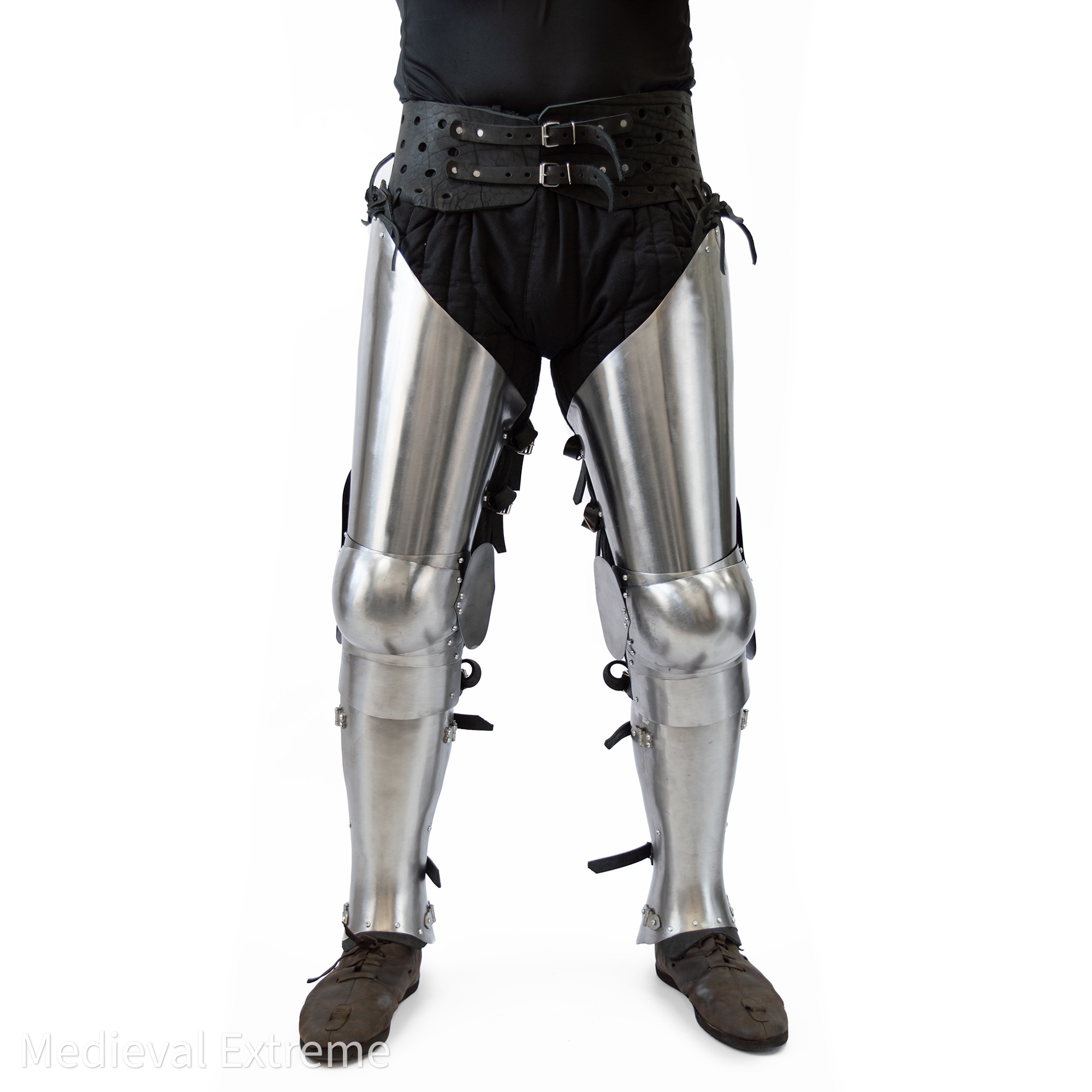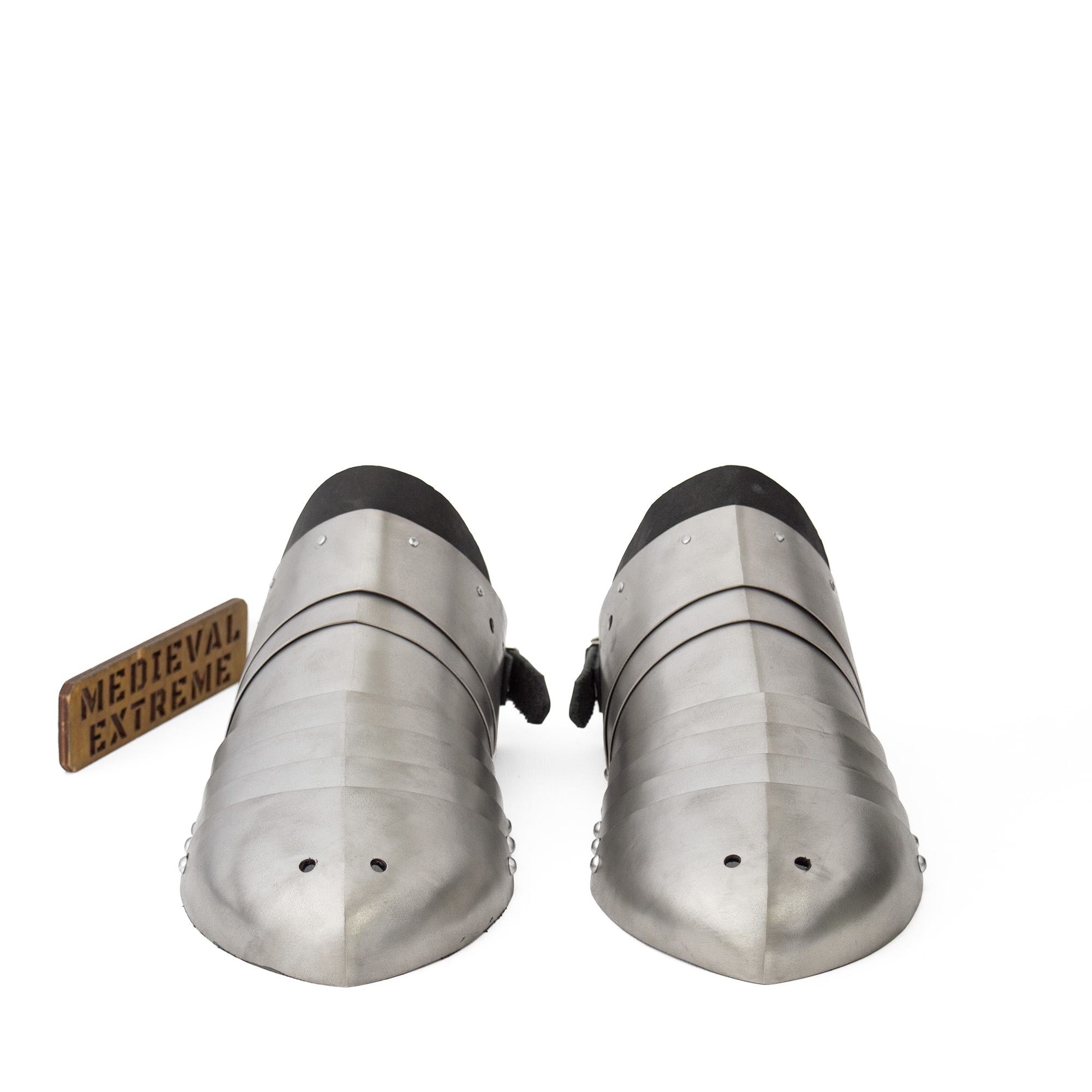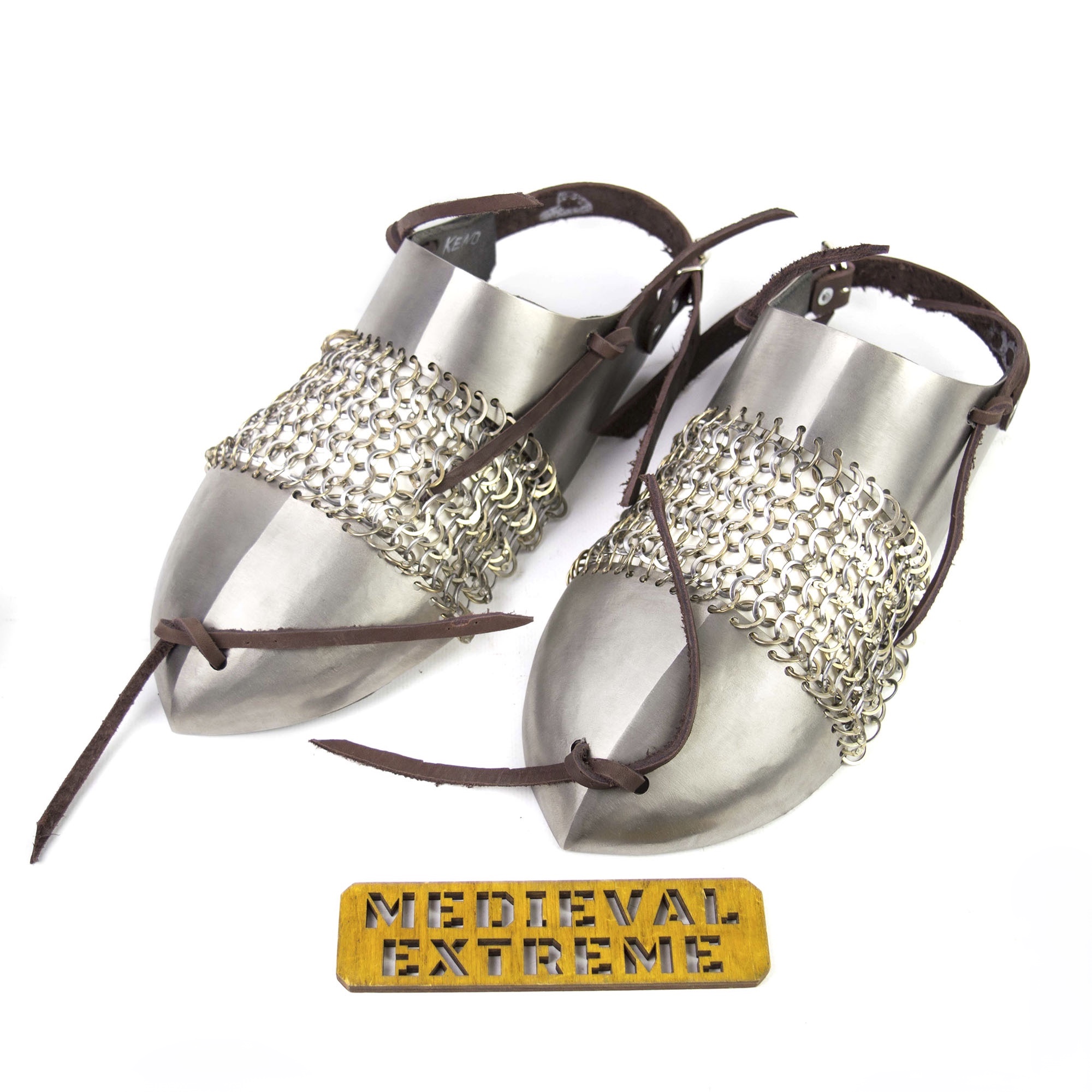By Jean Muksen
Abstract
The purpose of this article is, through a succinct recapitulation of sources, back up historically and according to sports regulations the design seen in the “Advanced full plate armor legs protection” produced by “Medieval Extreme”. To better conduct this study, the armor will first be annualized by its individual elements first (greaves, poleyn and cuisse), and only after that it will be discussed about its entirety.
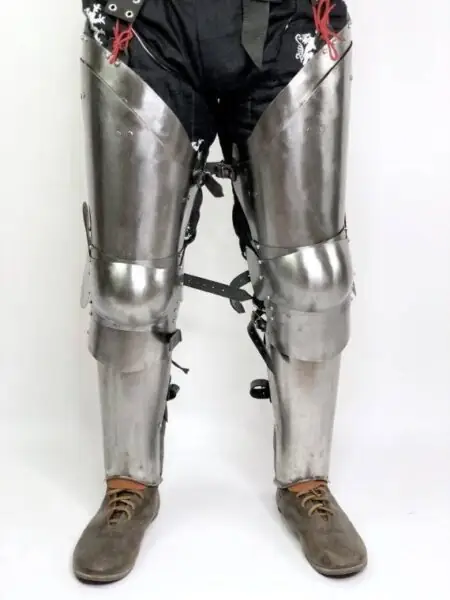
1.0 Contextualization about full plate armor legs
Through the military history, since ancient times leg protection has been one of major preoccupations, together with torso and head protection. The reason to that is clear, as the combatant mobility in field or out of it depends on its legs. It’s as an old issue as is the technology to mitigate it, with examples of leg protection being present in all the cultures around the ages. During Middle ages, in earlier periods they appeared early as simple metal bands riveted together, as seen in the Valsgärde objects from the 7th century.

Later on, following the metallurgy evolution, this simple metal bands evolved, becoming extremely complex and protective technological assets. However, for a better understanding of this process its important to separate the leg armor in parts: the shin armor (greaves), the knee armor (poleyn) and the tie armor (cuisse) and just them evolve to the analysis of the possible combinations.
1.1 The Greaves

Since Greek antiquity, greaves (κνημίδες) were mentioned in many texts, which denotates it’s importance and place as status symbol, what is verifiable in the Illiad, where the Greek forces are commonly referred to as “well-greaved Acheans” (euknēmidas Achaioi, ἐϋκνήμιδες Ἀχαιοὶ) to highlight how well equipped they were. This persisted in Roman Era, as various historians, from Polybius (200 BC – 118 BC) up to Vegetius (writer of Epitoma rei militaris, ca 500 BC), in fact mention the usage of this defence implement by the roman armies. Later on, in the early Middle Ages, greaves again appear in graves like Valsgärde (Fig. 2) and by the 13th century the form of the “schynbalds” is well consolidate, consisting of a metal band, in the shape of the shin, protecting the front part of the leg, as it is seen in the Trinity College Apocalypse manuscript (ca 1250 AC ):
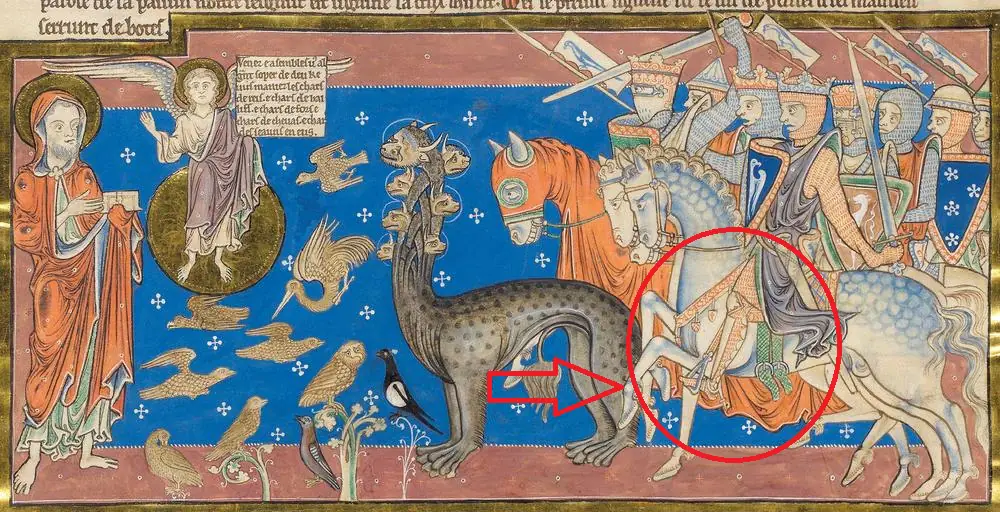
At the beginning of 14th century, the early form of greave evolved into a more anatomical shape, and diverges into single plate greaves (which later on turned into fully encased greaves) and “splint armor” greaves (which will not be covered in this essay) .
The single plate greaves from early 14th century can be seen in a variety of depictions, notably in the English effigy of Sir John d’Abernoun III, Dating to 1327 (Fig. 5; St Mary’s Church, Stoke d’Abernon, Surrey, England), the French funerary effigy of Robert of Artois (Fig. 6), from 1320, and in Italy, specifically in the Salerno Cathedral, ( Located in Campania) the same design appears in the effigy known as “Salerno Knight” (Fig. 7), dating from ca.1325.



As can be verified in this sources, this form of shin protection, the “demi-greave” was a style of armor used in congruence with the “floating articulation” method, that is the articulation between the different parts of the leg is achieved with straps and , cords or strings, being possible also the direct attachment to the undergarment or to the mail. This persists through all the 1330 decade, and that is portrait extensively, for example, in the St Martin’s Church, Champeaux, Île-de-France, France:
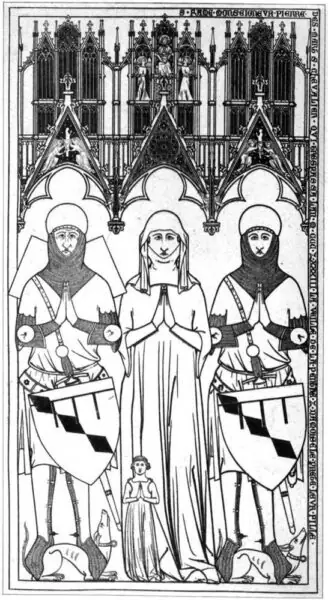
Starting from the 1340’s, this form of greave begins to be supplanted by the more advanced “close greave”, which encases completely the lower leg of the user ( the same “close” design appears also in splint/brigandine armor). The more advanced encased design becomes more common than his simpler demi greave counterpart, as can be seen in the effigy of Sir Hugh Hastings (ca 1340) which yet shows a “floating” design:

However, yet in 1444, Henri Briart’s tomb relief already shows what seems to be the more advanced “articulated” design, which uses rivets to articulate a series of smaller plates:

The same construction becomes very common, and in 1350’s, for example, to see floating designs in the legs or “demi greaves” becomes very rare. But they still do occurs, like in the tomb of Jacques Louchard, in 1350:
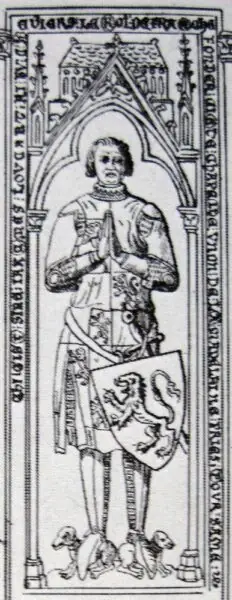
Soon after, this design falls out of fashion, and didn’t occur anymore. The fully encased greaves (being plate, splint, brigandine or composed of 3 or even more panels¹) in pair with full plated legs articulated with rivets (or even floating designs) become “the norm” for western medieval armor, with little exceptions, persisting through the second half of 14th and the entirety of 15th century.
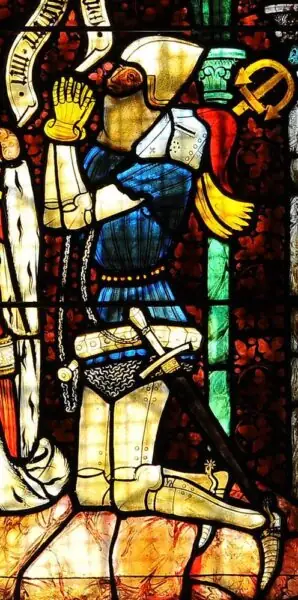
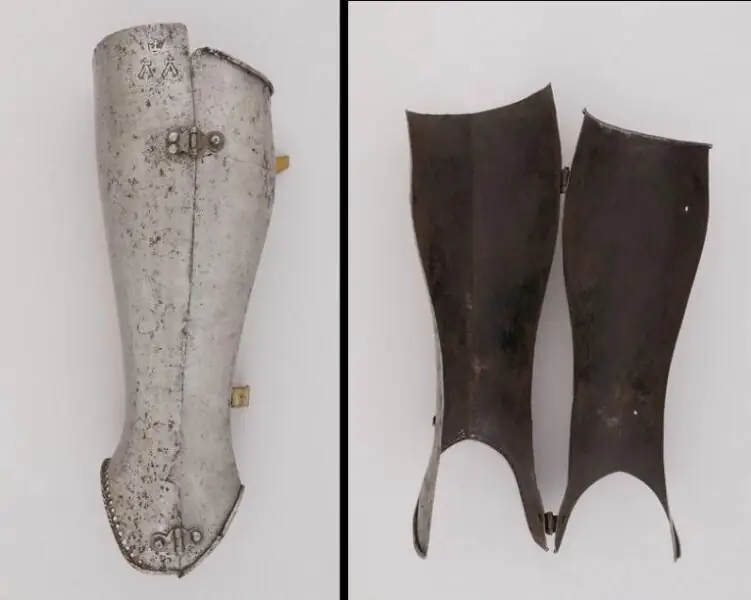
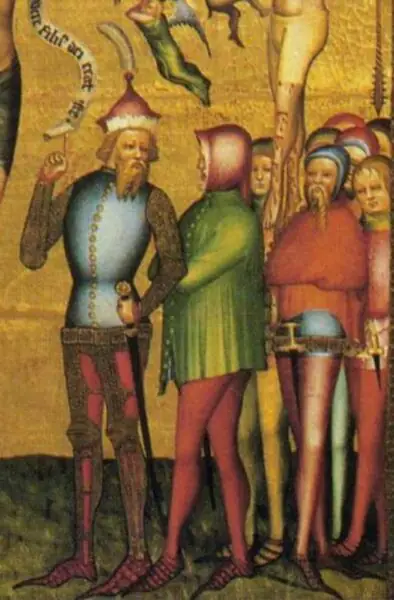
Related products:
1.2 the “poleyin” and cuisses
As state earlier in this essay, the leg armor which inspired this reproduction only appears in the middle to late 14th century, and it comprehends an universal design present in all of western Europe, specially Italy, United Kingdon and Germany. This specific shape and form are very similar to those of a set of poleyin and greaves found in Leeds (ca. 1380), except the cuisse does not include the extra plate for articulation at the top extremity:
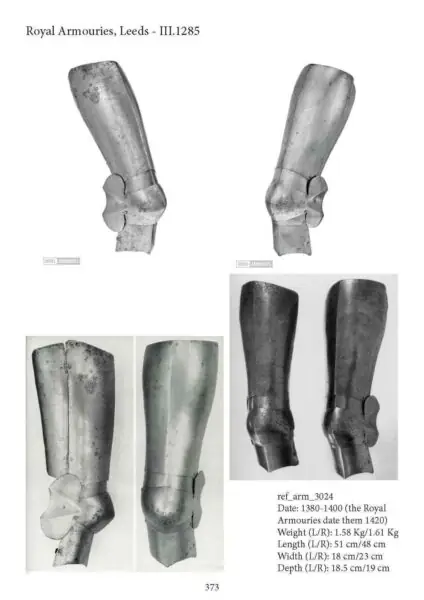
The same design repeats itself around all of Europe, and in fact sometimes does include an extra plate for more articulation of the leg, specially from the 15th century onwards, as the one seen in the Metropolitan Museum of Art, originary from Italy:
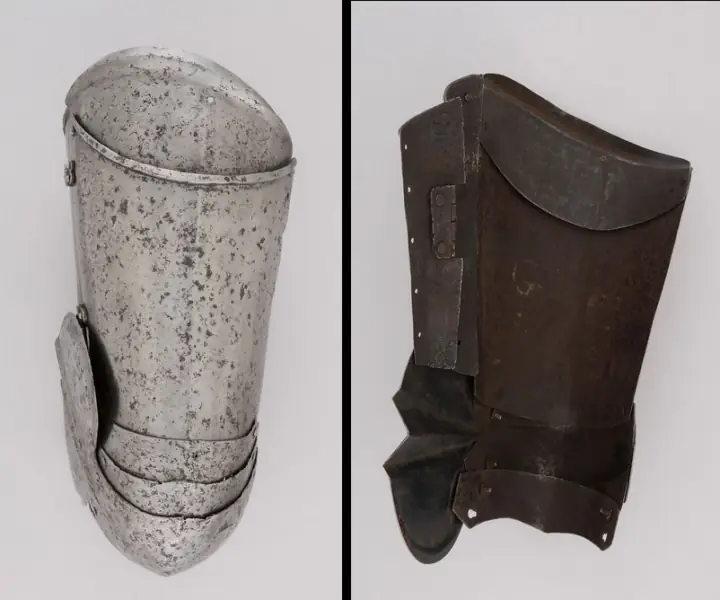
The same design is also convalidated by artwork representations of armor all around the western Europe, and even in some cases in eastern regions:


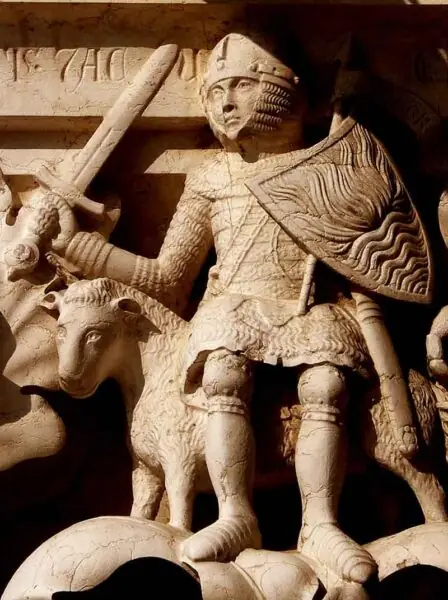
2.0 Conclusion
Based on the expose made here, the armor set in question (the poleyn and cuisses) are historically valid and sufficiently accurate, in shape e function, to kits from 1340 onwards in western Europe.
The combination with greaves must be compatible with the time period chosen for the armor, being demi-greaves adequate to pre 1360 kits (specifically 1340-1360, as the configuration of articulations with rivets only appears from 1340 onwards), and fully encased greaves compatible with kits from 1340 onwards, including 15th century armors.
According to HMBIA authenticity requirements, the demi-greaves and the model with two extra small plates at the sides does not comply with the standards established by the A.C. in 2020. However, the model is acceptable for other leagues such as IMCF.
For HMB league it’s recommended to use model with closed greaves instead of 3/4 one.
The form of greaves constructed with multiple panels must be “anatomical”, with smoot transitions.
Bibliographic References
Boeheim, Wendelin. 1890. Handbuch der Waffenkunde. Leipzig: Verlag von E. A. Seemann.
Crossley, Frederick Herbert. 1921. English church monuments A. D. 1150-1550. London: B.T. Batsford.
Guilhermy, Ferdinand. 1848. Monographie de l’église royale de Saint-Denis. Paris: Didron
Guilhermy, Ferdinand and Robert de Lasteyrie. 1873. “Inscriptions de la France du Ve siècle au XVIII” . Vol. 5. Imprimerie nationale
Hewitt, John. 1860. Ancient Armour and Weapons in Europe. J. Henry and J. Parker.
Nicolle, David. 1999. Arms and Armour of the Crusading Era 1050-1350. Volume 1. Greenhill Books.
Nicolle, David. 1983. Italian Medieval Armies: 1300-1500. Osprey Publishing.
Oakeshott, R. Ewart. 1960. The Archaeology of Weapons: Arms and Armour from Prehistory to the Age of Chivalry. Mineola, New York: Dover Publications.
Trinity College Cambridge homepage, accessed 26 October 2020


